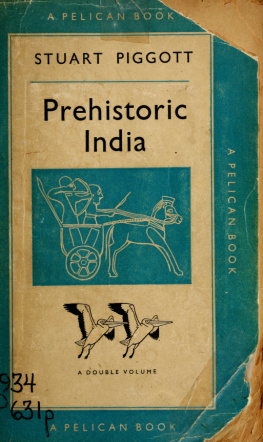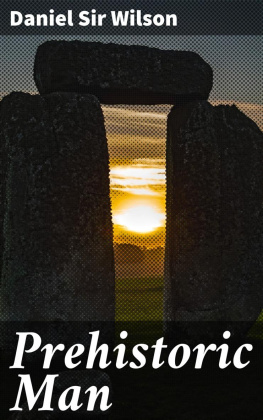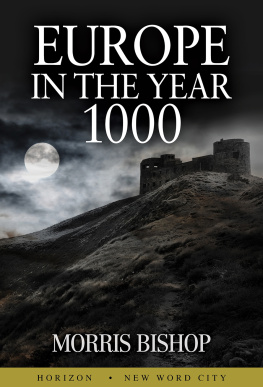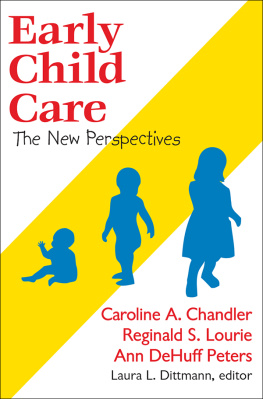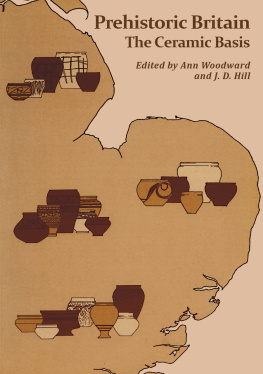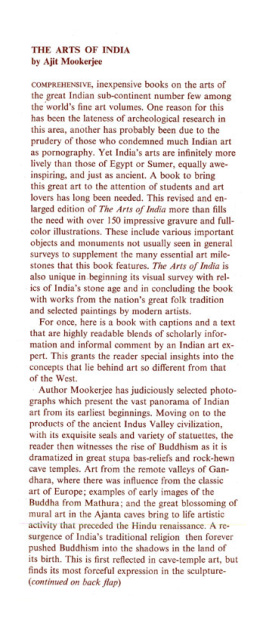Piggott - Prehistoric India to 1000 B. C
Here you can read online Piggott - Prehistoric India to 1000 B. C full text of the book (entire story) in english for free. Download pdf and epub, get meaning, cover and reviews about this ebook. publisher: Harmondsworth, Middlesex: Penguin Books, genre: Romance novel. Description of the work, (preface) as well as reviews are available. Best literature library LitArk.com created for fans of good reading and offers a wide selection of genres:
Romance novel
Science fiction
Adventure
Detective
Science
History
Home and family
Prose
Art
Politics
Computer
Non-fiction
Religion
Business
Children
Humor
Choose a favorite category and find really read worthwhile books. Enjoy immersion in the world of imagination, feel the emotions of the characters or learn something new for yourself, make an fascinating discovery.
- Book:Prehistoric India to 1000 B. C
- Author:
- Publisher:Harmondsworth, Middlesex: Penguin Books
- Genre:
- Rating:5 / 5
- Favourites:Add to favourites
- Your mark:
- 100
- 1
- 2
- 3
- 4
- 5
Prehistoric India to 1000 B. C: summary, description and annotation
We offer to read an annotation, description, summary or preface (depends on what the author of the book "Prehistoric India to 1000 B. C" wrote himself). If you haven't found the necessary information about the book — write in the comments, we will try to find it.
Prehistoric India to 1000 B. C — read online for free the complete book (whole text) full work
Below is the text of the book, divided by pages. System saving the place of the last page read, allows you to conveniently read the book "Prehistoric India to 1000 B. C" online for free, without having to search again every time where you left off. Put a bookmark, and you can go to the page where you finished reading at any time.
Font size:
Interval:
Bookmark:

Piggott, Stuart
This book was produced in EPUB format by the Internet Archive.
The book pages were scanned and converted to EPUB format automatically. This process relies on optical character recognition, and is somewhat susceptible to errors. The book may not offer the correct reading sequence, and there may be weird characters, non-words, and incorrect guesses at structure. Some page numbers and headers or footers may remain from the scanned page. The process which identifies images might have found stray marks on the page which are not actually images from the book. The hidden page numbering which may be available to your ereader corresponds to the numbered pages in the print edition, but is not an exact match; page numbers will increment at the same rate as the corresponding print edition, but we may have started numbering before the print book's visible page numbers. The Internet Archive is working to improve the scanning process and resulting books, but in the meantime, we hope that this book will be useful to you.
The Internet Archive was founded in 1996 to build an Internet library and to promote universal access to all knowledge. The Archive's purposes include offering permanent access for researchers, historians, scholars, people with disabilities, and the general public to historical collections that exist in digital format. The Internet Archive includes texts, audio, moving images, and software as well as archived web pages, and provides specialized services for information access for the blind and other persons with disabilities.
Created with abbyy2epub (v.1.7.6)
BX)OK
STUART PIGGOTT
Prehistoric India

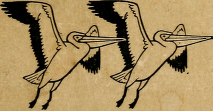
A DOUBLE VOLUME
CAN B O-O K
nf jTicrriita Jltbrart^B

(SUj? (gift of
Roy Craven
CONTENTS
Preface 9
I The Discovery of Prehistoric India 11
II Prelude-The Indian Stone Age 22 in The Background - Early Agricultural Communities in Western Asia 42
iv Bronze Age Peasant Communities
of Western India 66
v Cities and Towns of Sind and the
Punjab 132
vi The Time of Troubles and the End
of the Cities 214
vii Conquerors from the West - The
Aryans and the Rigveda 244
Digitized by the Internet Archive
in 2011 with funding from
LYRASIS Members and Sloan Foundation
http://www.archive.org/details/prehistoricindiaOOinpigg
LIST OF PLATES (Between pages 128 and 129)
Plate
Harappa: Section through citadel defences 1
Harappa: Detail of section through citadel defences 2
Harappa: Corn-pounding platform 3
Harappa: Burials in Cemetery R37 4
Harappa: Inhumation burial in Cemetery R37 5
Harappa: Painted pots 6
Harappa: Painted pots 7
Harappa; Clay figurines 8
LIST OF FIGURES IN TEXT
Page
1. Map of Western Asia showing ancient sites 46
2. Bronze Age sites in Western India 71
3. Typical Quetta Ware 74
4. Amri and Nundara pottery 83
5. Nal pottery 88
6. Kulli pottery 101
7. * Animals in Landscape' motifs in Kulli
Ware 103
8. Kulli figurines and Nundara pottery 107
9. Figurines of women, Kulli Culture 108
10. Incised stone vessels, Kulli Culture 111
11. Bronze Mirror, Kulli Culture 112
12. 'Animals in Landscape' motifs on Scarlet
Ware 116
13. Bowls, Rana Ghundai II phase 122
14. Pottery, Rana Ghundai Ilia and lllb phases 123
15. Pottery, Rana Ghundai IIIc phase 124
16. Figurines of women, Zhob Cultures 127
17. Map of Harappa Culture sites 137
18. Site plans of Mohenjo-daro and Harappa 152
LIST OF FIGURES IN TEXT
19. Plan of the Citadel, etc., Harappa 160
20. Section through Citadel defences, Harappa 162
21. Lay-out of city block, Mohenjo-daro 166
22. Impressions from stamp-seals, Mohenjo-daro 183
23. Sherds with animals and humans, Harappa 193
24. Copper and bronze tools, Harappa Culture 199
25. Pottery, Shahi-tump Cemetery 217
26. Copper objects, Shahi-tump Cemetery 219
27. Axe, pins, seals etc., Jhukar Culture 224
28. Copper shaft-hole axe, Mohenjo-daro 228
29. Designs on Cemetery H pots, Harappa 234
30. Bronze Sword from Rajanpur, Punjab 236
31. Chariots, 15th to 13th centuries B.C. 275
32. The chariot of the Rigveda 280
CHRONOLOGICAL TABLES
Page
Table I 65
Table II 243
PREFACE
This book renders an account of our knowledge of Indian prehistory from the earliest times to the settlement of the Aryans in the north-west in the second half of the second millennium B.C. It does not pretend to be more than a stocktaking of our incomplete evidence and interpretation, as a preliminary and incentive to further work in the field. Some form of working hypothesis is essential, however drastically it may have to be revised, and I have therefore attempted to indicate what seem to me to be the nature and succession of the various human cultures making up the pattern of the earliest India.
Much of the material presented in the book is either new and hitherto unpublished or is a synthesis made for the first time. It is therefore inevitable that a great deal of technical detail has to be included, and much of the argument addressed to the specialist in oriental archaeology. But despite this, it is hoped that a coherent story of the general course of events in prehistoric India has been presented to the nonspecialist reader.
The original work on which Chapters IV to VI are based was carried out in Indian museums (and to a very limited extent in the field) between 1942 and 1945 in the intervals of military intelligence duties. My gratitude is due to my friends on the Archaeological Survey of India who helped and encouraged me, notably the late Rao Bahadur Dikshit, formerly Director-General of the Survey, and Dr K. N. Puri. In 1944 Dr (now Professor) R. E. Mortimer Wheeler was appointed Director-General, and while we were both in India and since my return to Britain he has spared neither time nor trouble in giving me every assistance. It is a pleasant duty to record my gratitude here.
10 PREFACE
In my own university, my colleagues Mr H. J. H. Drummond and Professor Myles Dillon (now of the Institute for Advanced Studies in Dublin) have been kind enough to read and criticize in draft Chapters II and VI respectively. In my discussion of the Aryan chariot I have been materially helped by Miss H. L. Lorimer, who most generously allowed me to read in typescript portions of her forthcoming book, Homer and the Monuments. I have been particularly fortunate in having had the opportunity of discussing the final drafts of Chapters III to VI with Dr Donald McCown of the Oriental Institute of the University of Chicago. Dr Claude Schaeffer's great work on the comparative chronology of west Asiatic sites in the period 2500 to 1100 B.C. appeared after my book had been written, but I have been able to incorporate certain revised dates bearing on the Indian problems. On the whole our conclusions, independently reached, were in relatively close agreement. The illustrations include much material published for the first time and are mainly based on original drawings by the author. Figs. 1, 3, 13-23 and 25 are by Mr L. F. Venables, and Figs. 4-10 and 12 by Miss E. M. Howard. The half-tone plates are from photographs supplied by the Archaeological Survey of India with the sanction of the Director-General.
Next pageFont size:
Interval:
Bookmark:
Similar books «Prehistoric India to 1000 B. C»
Look at similar books to Prehistoric India to 1000 B. C. We have selected literature similar in name and meaning in the hope of providing readers with more options to find new, interesting, not yet read works.
Discussion, reviews of the book Prehistoric India to 1000 B. C and just readers' own opinions. Leave your comments, write what you think about the work, its meaning or the main characters. Specify what exactly you liked and what you didn't like, and why you think so.

